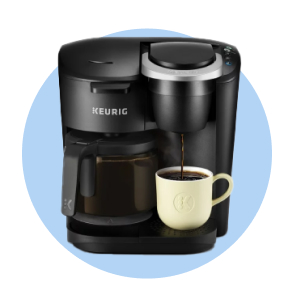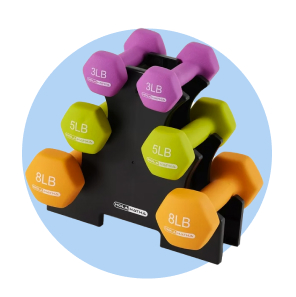
The Buyers Guide to Security Alarm Systems for Small Businesses
Wired, wireless or hybrid?
Alarms are a necessary component of any company’s security system, but finding the right solution with limited resources and a tight budget is harder than it sounds. There are so many options on the market, but how many alarms does your fledgling company really need—and how much should you spend?
At Walmart Business, we understand the challenges that startups face as they try to secure their workspaces while properly managing their time and money. We’ve rounded up the most common types of security alarm systems for small businesses and an overview of their costs to help you make an informed decision.
Security alarms for small business: finding the right solution
There are two key factors to consider when buying a security alarm system:
- Wired vs. wireless: These terms define how each sensor interacts with the control panel.
- Monitored vs. unmonitored: The type of system determines the response that occurs when the alarm is activated.
While it’s important to understand the types of alarms available, neither choice has to be binary. Many small businesses combine several elements into a suitable hybrid setup.

Wired alarms are efficient, but expensive
Wired alarms use wires to physically connect each sensor to a control panel. These connections serve two purposes—they transmit data and they deliver electricity across the entire system. When these wires are installed correctly, the alarm systems they power are efficient and difficult to tamper with. In fact, if you run the cables through tamper-evident seals, you can pinpoint where potential bad actors try to breach the system.
As a term like “installed correctly” implies, wired alarms do require an installation process. The exact details of this process vary, but generally require running cables through walls and installing wall fixtures for each camera.
Unfortunately, wired systems have one big drawback—since they rely on electricity, turning off the power will shut them down. That makes them vulnerable to everything from storms to accidental outages. However, these concerns can be reduced with generators or other backup systems.

Wireless alarms are cost-effective & easy to install
Wireless alarm systems, on the other hand, use battery-powered transmitters to connect sensors and control panels. These devices are much easier to install at a reduced cost and can often be set up entirely in-house.
By using batteries, wireless sensors are not reliant on an external power source. If a storm knocks out electricity for the region, these alarms will keep running. However, that also means that sensors will need consistent maintenance and battery replacement to prevent alarm outages.
It’s worth remembering that wireless connections have limitations. Transmitters do not have a limitless range and wall materials and thicknesses can restrict that range further. This may not be an issue if your business is small enough that its square footage is easily covered, but be sure to note the wireless range of any alarm system you install.

Monitored systems provide peace of mind
Monitored alarm systems are actively tracked by a security team or an off-site security company. When an alarm goes off, the system notifies a central dispatcher who can coordinate an appropriate response. Some monitored platforms log data for business owners to review, such as key card use or when alarms were deactivated.
For small business owners, monitored alarms provide a little peace of mind, ensuring that someone is looking out for your company at all times. If the ongoing cost of a monitoring service is out of your budget or just excessive for your particular needs, unmonitored systems may be a better fit.

Unmonitored systems alert staff to take action
As the name implies, unmonitored alarms are not actively tracked by any party. However, unmonitored does not mean ignored—rather, it relies on the alarm itself to notify staff that a problem has occurred.
Unmonitored systems tend to be deployed during business hours, such as when someone exits a store without paying for goods. While these alarms won’t contact a dispatcher, they can activate security lights, lock doors or take other actions that protect customers and your business. This enables your security team to take action immediately.

Hybrid systems offer the best of both worlds
Hybrid alarm systems combine elements of wired and wireless systems to mitigate the drawbacks of each. For example, a wired system might include wireless transmitters as a backup in case the power goes out. Hybrid sensors are usually more complex than the individual categories, but also more likely to include additional features like automated troubleshooting.
Depending on your setup, you may also be able to balance monitored and unmonitored alarms. If you work in an industry where constant surveillance is required, you can use monitored alarms in especially vulnerable places and supplement them with unmonitored alarms that work on their own.
Putting a cost on your alarm system
A brand-new alarm system will have two basic components: a sensor network made up of individual alarms and a control panel. You can buy these devices individually or as a package, but the total cost will vary based on their quality and the number of required sensors.
Set a budget of around $200 for your control panels. Sensors have a much wider price range, starting under $50 and gradually increasing by hundreds of dollars per device. At a minimum, business owners will need one sensor for each entry point into the building. You may also consider motion sensors for tracking indoor movement for extra security. Finally, there may be specific valuables on-site that need their own sensors, such as glass display cases for expensive items.
Outside of the products themselves, a third-party installation service can ensure everything is installed correctly. Costs vary by business size and needs, but expect to spend around $400. Small businesses may be able to save money by installing everything in-house. Self-installation is ideal for wireless systems as they don’t require major electrical work. Wired systems, on the other hand, are best when installed by a technician or licensed electrician who is insured and knows how to maintain safety protocols.

Making alarm maintenance easy
After you’ve installed your security system, your work isn’t done. Modern alarms need regular maintenance to stay in working order. Each alarm system will have its own guidelines, but the following steps will help you manage your resources and ensure maintenance doesn’t slip through the cracks:
- Conduct weekly alarm maintenance: Like many electronics, alarm systems wear down over time. You can keep them in good condition by making maintenance part of your regular cleaning schedule. Once per week, check the control panel and sensors for dust and grime, removing them as required. In the long term, spring cleaning is a good opportunity for conducting heavy-duty maintenance, such as replacing sensor batteries or wiring.
- Test your alarms: Even if the control panel says everything is connected, it’s a good idea to periodically test the alarm system. For example, can the control panel recognize when doors are open or closed? Are the motion sensors still recognizing activity? Is the alarm itself still audible? If you use a monitoring service, reach out to your point of contact about testing network connections to ensure everything is in working order.
- Update firmware: Modern alarms tend to connect to the internet by default, especially monitored systems. Updating firmware is a reasonable step to protect anyone from finding a digital backdoor to your security system.
Let Walmart Business help you find the right security alarm
Choosing the right security alarm systems for small business needs isn’t easy. Walmart Business can help by offering commercial-grade alarm systems that address your vulnerabilities without breaking your budget. If you already have a Walmart Business account, upgrade to a Walmart Business+ membership for free shipping,1 free delivery from stores on orders over $352 and 2% back in Walmart Business Rewards for purchases over $250.3 These savings could add up to over $500 each year!4 Learn more here.


Limited-time offer
Unlock your special promo code
Stay informed on Walmart Business news & get $20 off a $100 purchase!1
1Minimum order of $100. Promo code can be used one time & may not be combined with other offers. Offer not transferable & void where prohibited by law. Customer responsible for all applicable taxes. Offer expires 12/31/2025 at 11:59pm PT. Further restrictions apply. See terms at checkout for details. Promo code offers available in limited quantities. While supplies last.
1 Excludes most Marketplace items, freight and certain location surcharges.
2 Restrictions apply.
3 Rewards can only be used toward future purchases on Walmart Business. Additional terms apply.
4 Savings based on 1 free $35+ delivery order vs. $9.95 fee and 1 free shipping order under $35 vs. $6.99 fee biweekly, plus 2% Walmart Business rewards on monthly order >$250 (average value of $400).
Exciting news awaits
Hear firsthand about new products, features & promotions.
By clicking submit, you agree to receive emails about Walmart Business and acknowledge you have read and agreed to our Terms of use and Privacy Policy.










